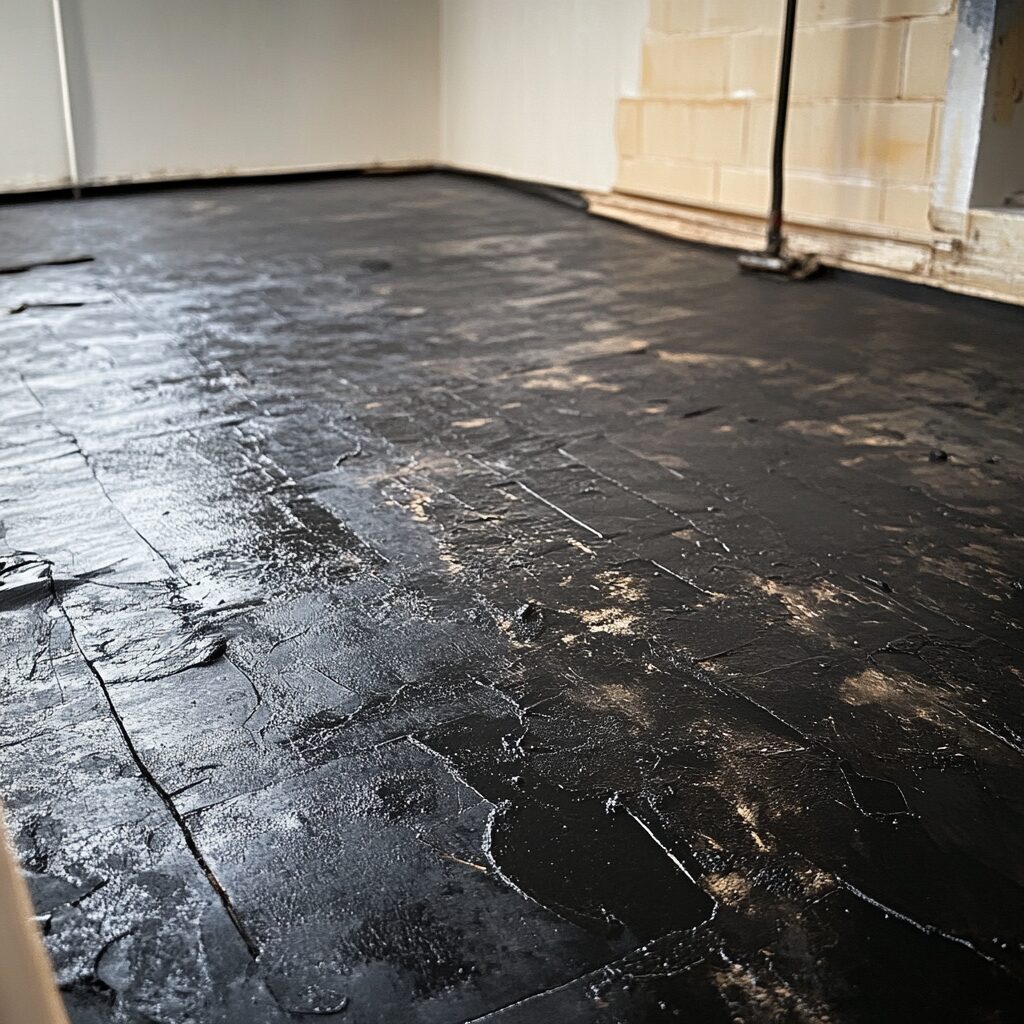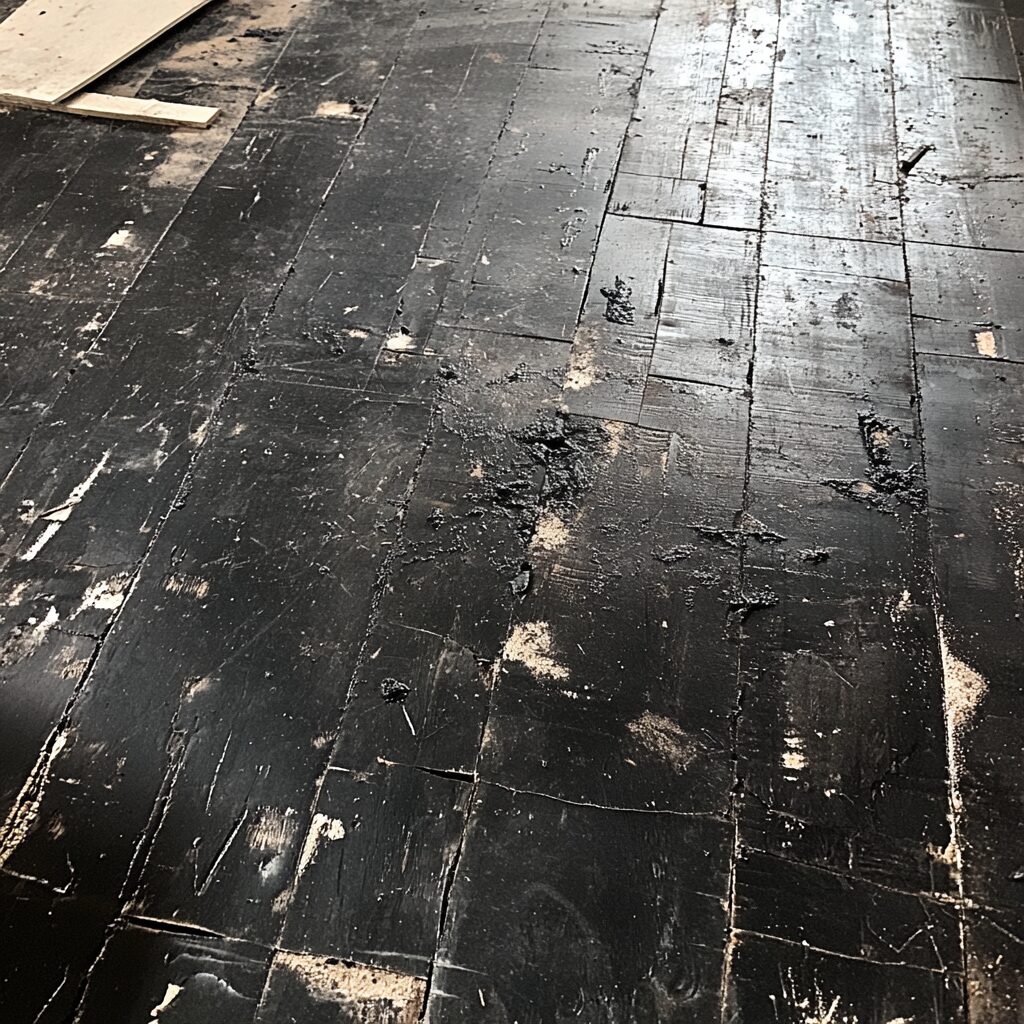How To Remove Black Mastic: A Step-by-Step Guide

Black mastic, a type of adhesive commonly used in older flooring installations, can be a challenge to remove, especially if it contains asbestos. Removing black mastic requires careful handling and the right techniques to ensure safety and effectiveness. Whether you’re dealing with concrete, tile, or wood floors, here is a comprehensive guide to help you through the process.
Understanding Black Mastic: What It Is and Why It Matters
Black mastic is a term used to describe a type of adhesive that was commonly used in construction, particularly for flooring applications. This adhesive is typically black or dark brown in color and has a tar-like appearance. Here’s a closer look at what black mastic is, its historical use, and the potential concerns associated with it.
What is Black Mastic?
Black mastic is an adhesive made from a combination of asphalt, tar, and sometimes other materials like styrene-butadiene rubber. It was widely used in the 20th century for adhering tiles, linoleum, and other types of flooring to subfloors. The adhesive’s black color comes from its asphalt content, which also gives it a sticky, tar-like consistency.

Historical Use
During the mid-20th century, black mastic was a popular choice for flooring installations due to its strong adhesive properties and durability. It was commonly used in residential, commercial, and industrial buildings. The adhesive was applied to the subfloor, and then the flooring material was laid on top, creating a strong bond that could withstand heavy foot traffic and wear.
Asbestos Concerns
One of the significant concerns with black mastic is that older formulations often contained asbestos fibers. Asbestos was added to the adhesive to increase its durability and heat resistance. However, asbestos is now known to be a hazardous material that can cause serious health issues, including mesothelioma and lung cancer, when its fibers are inhaled.
Identifying Black Mastic
You can typically identify black mastic by its color and consistency. It is usually found beneath old flooring materials like vinyl or linoleum. When these floor coverings are removed, the black adhesive may be visible on the subfloor. However, it is important to note that you cannot determine if the mastic contains asbestos just by looking at it. Professional testing is required to confirm the presence of asbestos.
Safety and Removal
If you suspect that black mastic in your home contains asbestos, it is crucial to handle it with care. Disturbing asbestos-containing materials can release harmful fibers into the air. It is recommended to hire a professional asbestos abatement company to safely remove and dispose of the material. If the black mastic does not contain asbestos, it can be removed using appropriate solvents and safety precautions.
Modern Alternatives
Today, black mastic adhesives are still available, but they no longer contain asbestos. Modern formulations are typically latex-based or water-based, making them safer to use and easier to remove if necessary.

Steps For Removing Black Mastic
Step 1: Identify the Presence of Asbestos
Before you begin, it’s crucial to determine whether the black mastic contains asbestos. You cannot identify asbestos just by looking at the mastic, so professional testing (and removal) is recommended.
Step 2: Gather Necessary Supplies
For safe and effective removal, you will need:
- Protective gear (gloves, mask, goggles)
- Plastic sheeting and tape
- Mastic remover (citrus-based recommended)
- Scrapers and putty knives
- Absorbent materials (like cat litter)
- Buckets and rags
- A heat gun (optional)
- A shop vacuum with a HEPA filter
Step 3: Prepare the Area
Seal off the work area with plastic sheeting to prevent the spread of dust and debris. Ensure the room is well-ventilated by opening windows and using fans.

Step 4: Apply Mastic Remover
Choose a mastic remover that is safe and effective. Citrus-based removers are environmentally friendly options. Apply the remover generously over the black mastic and let it sit for the recommended time, usually between 1 to 12 hours.
Step 5: Scrape Off the Mastic
Once the mastic has softened, use a scraper or putty knife to remove it. Start at one corner and work your way across the floor. Be patient, as this process can be time-consuming.
Step 6: Clean the Residue
After scraping off the bulk of the mastic, there may still be some residue left. Use absorbent materials like cat litter to soak up any remaining remover and mastic. Then, clean the area with rags and a suitable cleaner.
Step 7: Final Touches
For any stubborn spots, you can use a heat gun to soften the mastic further. Be cautious with the heat gun to avoid damaging the subfloor or creating fumes. Scrape off the softened mastic and clean the area thoroughly.
Step 8: Dispose of Waste Properly
If the mastic contains asbestos, it must be disposed of according to local regulations. Contact your local waste management authority for guidance on proper disposal methods.

Removing Black Mastic From Wood
For wood floors follow the steps above, then clean remaining residue with water or mineral spirits. Keep in mind that wood is porous and will soak up liquids, which could affect the performance of new adhesives. Allow additional time to dry. Once all mastic is removed and the floor is dry, (based on preference) you can sand the wood to restore its appearance and apply an appropriate wood finish to protect the floor.
Removing Black Mastic From Tile
When removing black mastic from tile, make sure to use a commercial mastic remover that is designed for use on tile. Follow the steps above but be cautious and test a small area, as some products can damage the tile or grout. Avoid using excessive water or leaving standing water on the floor, as it can seep under tiles and cause damage. If the mastic is extremely difficult to remove or if you’re concerned about damaging the tiles, consider hiring a professional.
Conclusion
Removing black mastic can be a challenging task, but with the right tools and precautions, it can be done safely and effectively. Always prioritize safety, especially if asbestos is involved, and consider hiring professionals if you are unsure about any part of the process.
You Might Also Like:
- Winter Cleaning With Citrus King
- Avoid Toxic Chemicals: Use Natural Alternatives
- What Are Terpenes?
- Seven Benefits of Cleaning with Citrus
